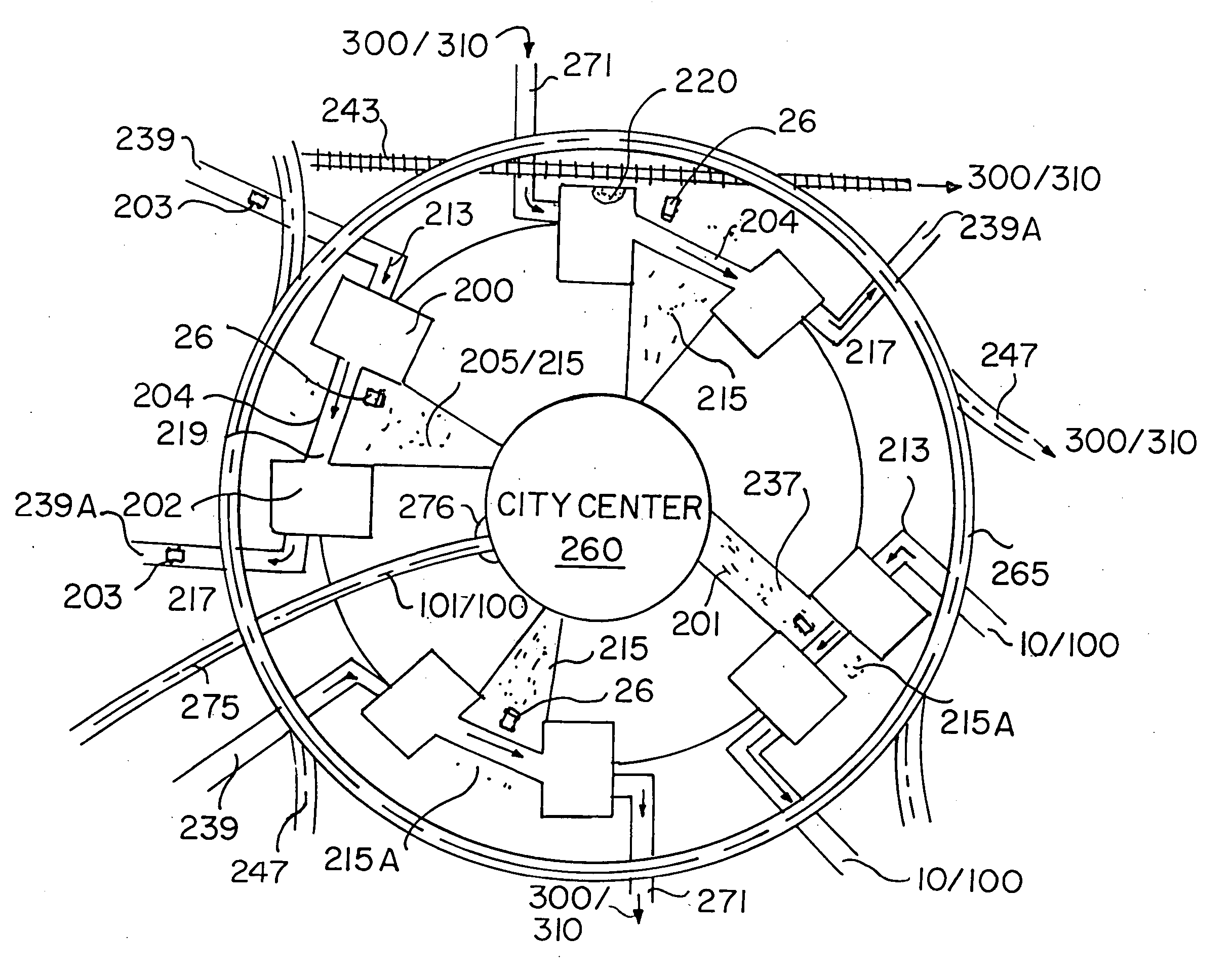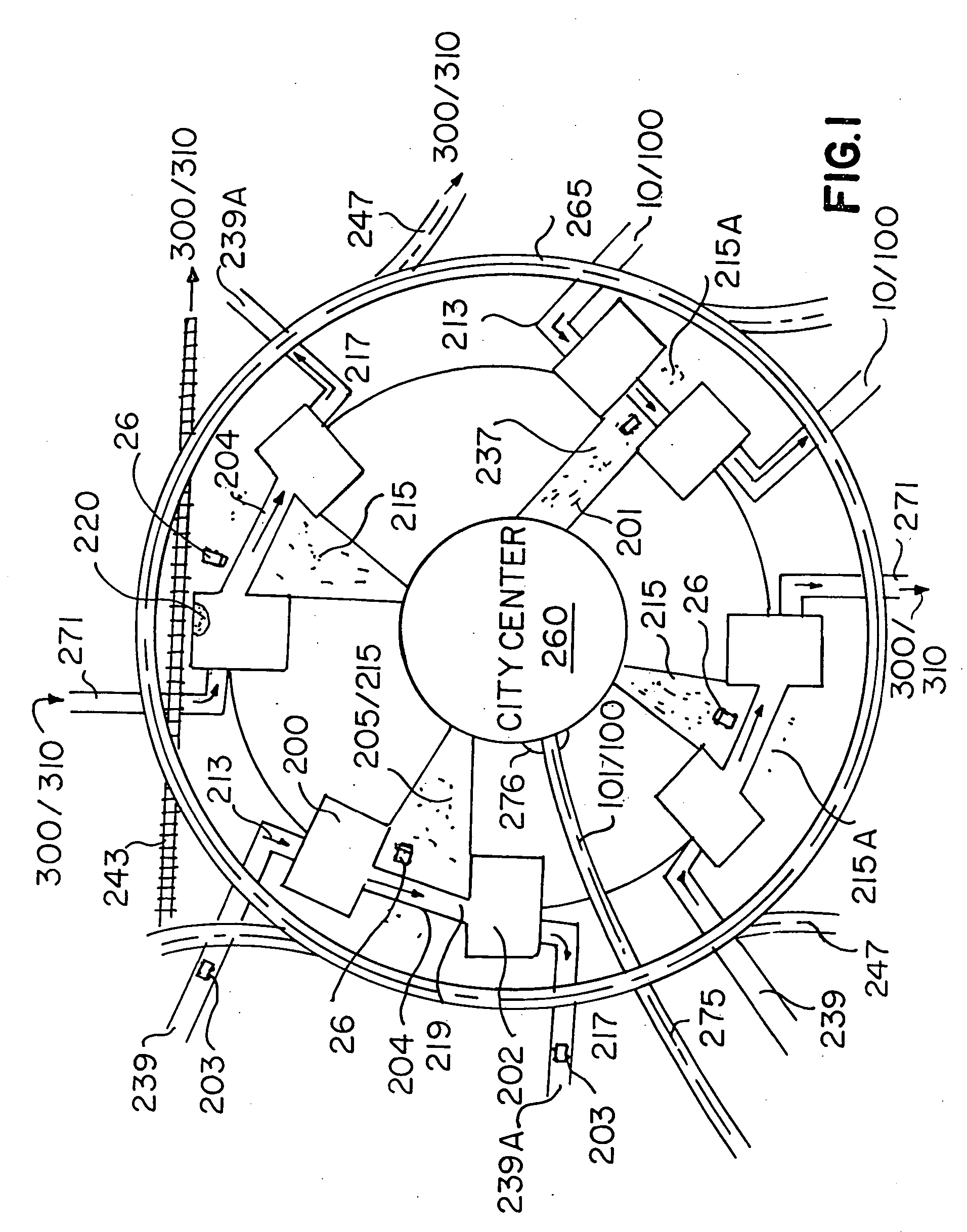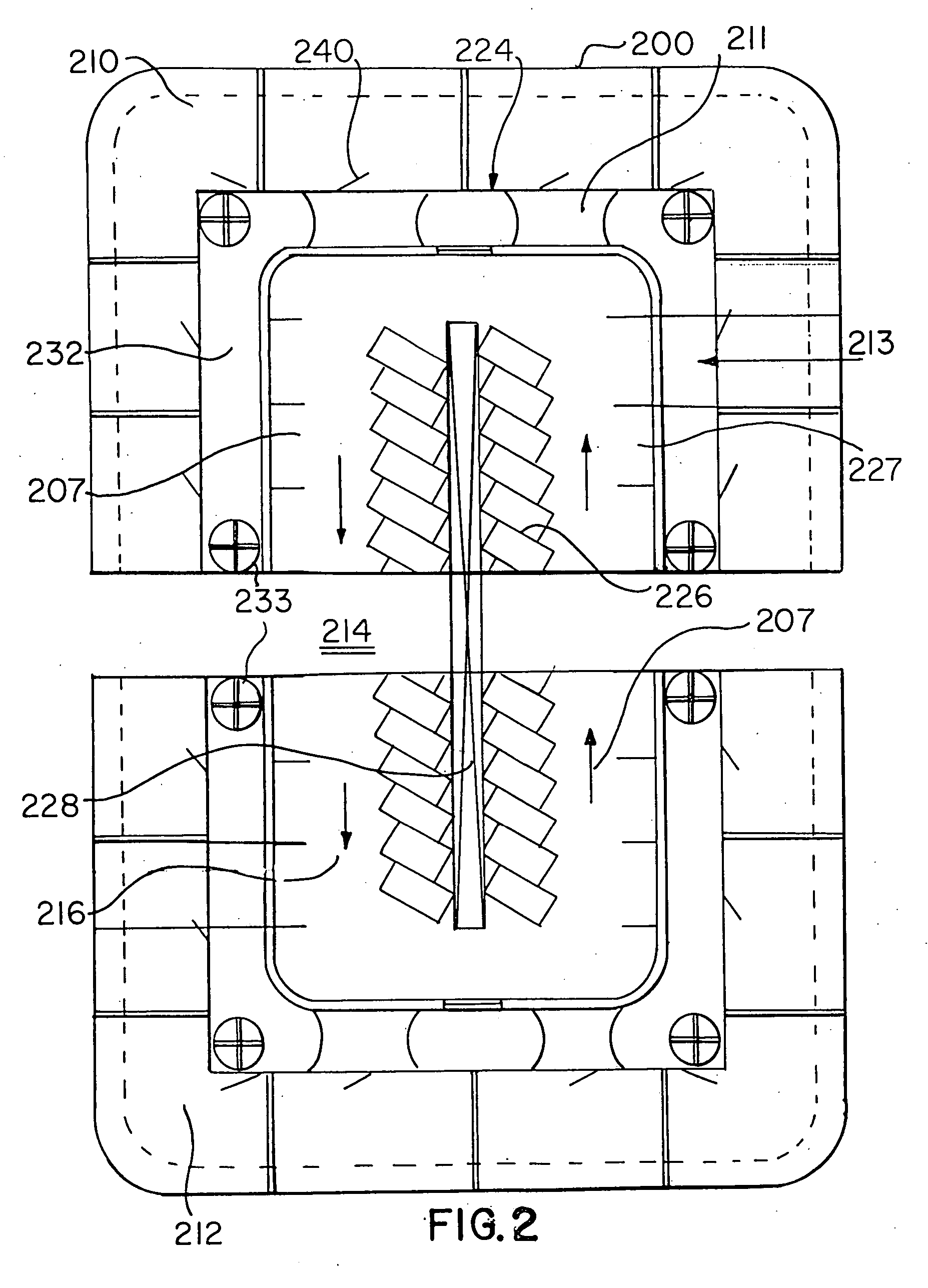Community intermodal transit system
- Summary
- Abstract
- Description
- Claims
- Application Information
AI Technical Summary
Benefits of technology
Problems solved by technology
Method used
Image
Examples
Embodiment Construction
[0058] A community intermodal system (CIS) proposes a method of movement that relies upon, within an urban or suburban community context, high quality public spaces between buildings that are safe, comfortable, useful, and interesting. The interaction of each and every component of the urban form should be constructed and positioned to support large-scale pedestrian movements and to further the principal CIS objective: to cause larger than typical numbers of people to walk longer than typical distances and access transit or other modes of transportation as part of a multimodal trip involving at least one car-based trip segment.
[0059] While there have been numerous studies to support the calculation that pedestrian movements are typically limited to one-quarter to one-half mile distances (see: Walking Distances to and from Light-Rail Stations at: http: / / www.enhancements.org / trb / 1538-003.pdf), little research or observations have been undertaken or published on the numbers of pedestr...
PUM
 Login to View More
Login to View More Abstract
Description
Claims
Application Information
 Login to View More
Login to View More - R&D
- Intellectual Property
- Life Sciences
- Materials
- Tech Scout
- Unparalleled Data Quality
- Higher Quality Content
- 60% Fewer Hallucinations
Browse by: Latest US Patents, China's latest patents, Technical Efficacy Thesaurus, Application Domain, Technology Topic, Popular Technical Reports.
© 2025 PatSnap. All rights reserved.Legal|Privacy policy|Modern Slavery Act Transparency Statement|Sitemap|About US| Contact US: help@patsnap.com



